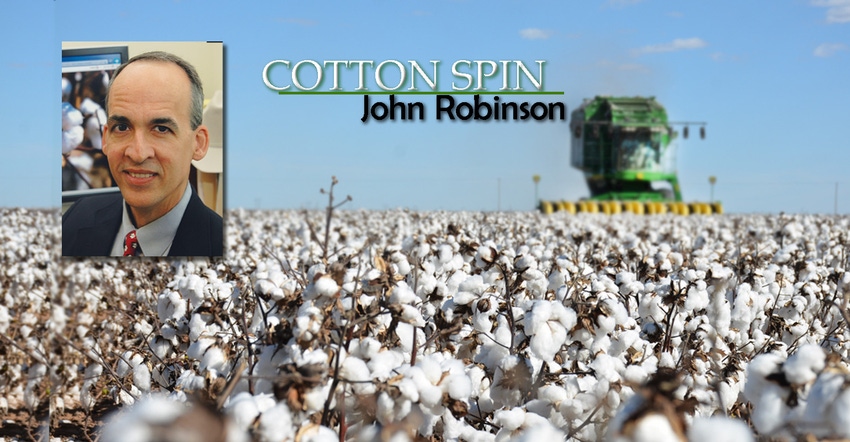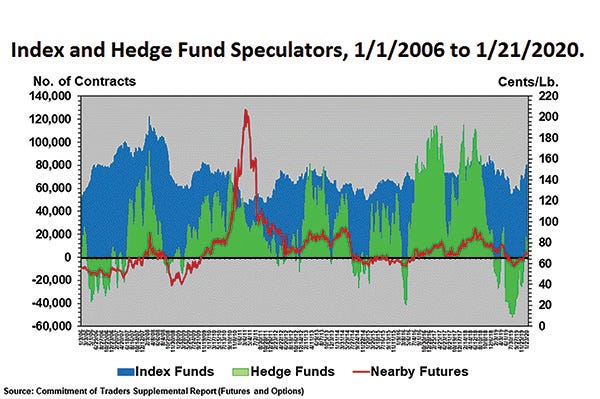
There are fundamental reasons to expect either stable (i.e., not increasing) ending stocks for 2020, or maybe tightening ending stocks of U.S. cotton after the 2020 crop. In either case, I think December 20 ICE cotton futures have a chance to rise at least to the mid-70s.
The pattern of cotton prices in 2020 will be volatile, under the influence of acreage reports, crop conditions, and weather. One thing that makes future prices volatile is the influence of speculative buying and selling (Figure 1).
I have discussed the influence of index funds and hedge funds in previous columns. The point I want to make with this column is more specific. The hedge fund pattern shown in Figure 1 (in green) shows a repeated pattern of peaks and valleys. The hedge funds get on a bandwagon of buying, which often only lasts a few weeks. This is shown on the chart as tall, skinny green upward spikes. It will probably happen once or twice during the 2020 growing season.

What does this mean? These upward spikes of futures buying are like a catalyst. When markets are rising for fundamental reasons, or for no particular reason, hedge fund buying runs the price up further. It is not unusual to see an additional three to five cents due to hedge fund buying.
In 2020 this potentially means that the hedge funds might buy the market up into the upper 70s. What I most want growers to see is that these opportunities are fleeting. They come and go. Look at the skinny upward spikes in the chart below. They don’t last long. You must reach out and grab them.
So, if you have signed a basis contract with a merchant, and the futures market jumps up to 77 cents, consider calling the merchant and pricing some. Or if you have no contract at all, consider calling your buyer and pricing some. Or if you are holding your cotton open until harvest, consider hedging some. You could even hedge these price spikes if a pool is selling your cash cotton – they’re not mutually exclusive things.
Ultimately, we don’t know where prices will go. We only know what the market is showing us today. If the futures market jumps to 77 cents, and that covers your operating costs and most of your fixed costs, consider selling or hedging some. If you are wrong and prices are higher the following week, then consider selling or hedging some more.
For additional thoughts on these and other cotton marketing topics, please visit my weekly on-line newsletter at http://agrilife.org/cottonmarketing/.
About the Author(s)
You May Also Like




